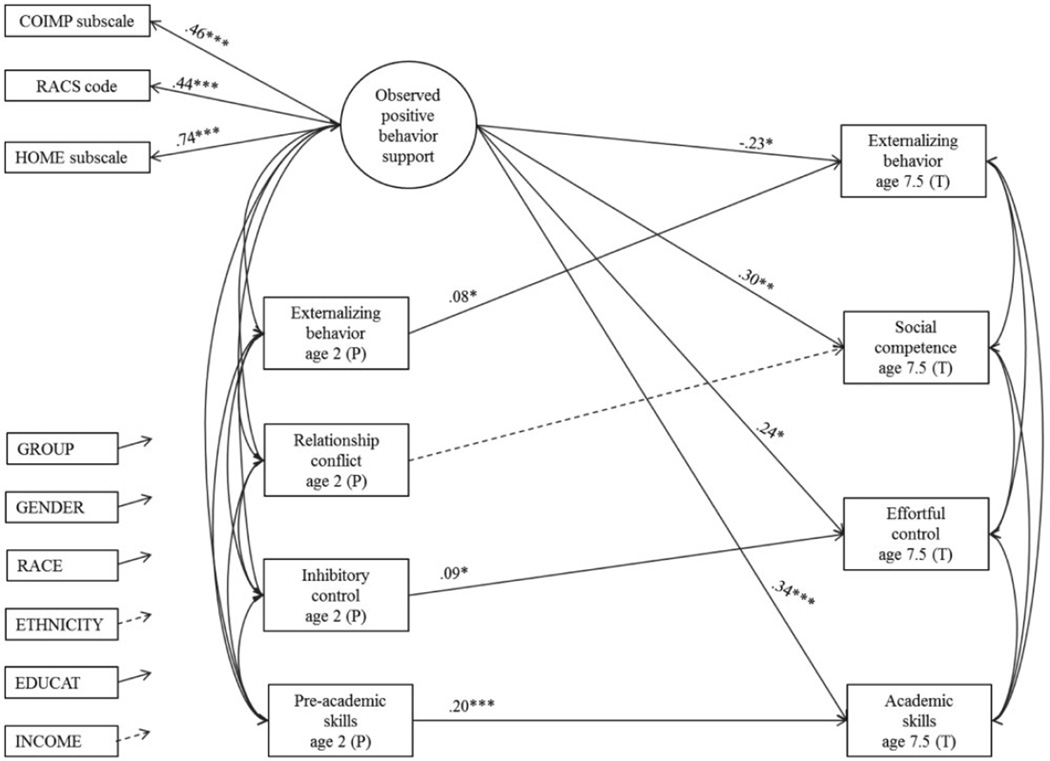Figure 2.
Regression Models Showing Prediction of Child Adjustment Variables at Age 7.5 by Observed Positive Behavior Support at Age 2, Controlling for Earlier Child Behavior and Covariates.
Note: ***p < .001, **p < .01, *p < .05, +p < .10. P = parent reported; C = child assessed; T = teacher reported. We controlled for effects of being in the intervention group, child gender, race and ethnicity, parent education, and family income. Data were collected from multiple locations so project site was included as a covariate. Male gender was related to higher externalizing behavior, lower effortful control, and lower social competence. African-American/biracial race was related to higher externalizing behavior and lower effortful control. Children in the intervention group had lower externalizing behavior. Within-time correlation of residual covariances among the age 2 and age 7.5 outcome measures were modeled. Results presented were based full information maximum likelihood (FIML) in Mplus. There were comparable effects using listwise deletion (externalizing, β = −.24*; social competence β = .38**; effortful control, β = .31**; academic skills, β = .32**).

